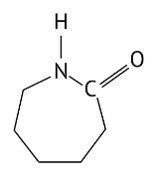Chemistry NCERT Exemplar Solutions Class 12th Chapter Fifteen
Get insights from 85 questions on Chemistry NCERT Exemplar Solutions Class 12th Chapter Fifteen, answered by students, alumni, and experts. You may also ask and answer any question you like about Chemistry NCERT Exemplar Solutions Class 12th Chapter Fifteen
Follow Ask QuestionQuestions
Discussions
Active Users
Followers
New answer posted
5 months agoContributor-Level 10
This is a multiple choice answer as classified in NCERT Exemplar
Option (A) and (D)
Explanation: Polyamides: These polymers with amide linkages are important examples of synthetic fibers and are known as nylons.
Polyesters: These are the polycondensation products of dicarboxylic acids and diols.
Dacron or terylene is the most well-known example of a polyester.
New answer posted
5 months agoContributor-Level 10
This is a multiple choice answer as classified in NCERT Exemplar
Option (A) and (C)
Explanation: Synthetic rubbers are either homopolymers or copolymers of 1,3-butadiene or its derivatives with another unsaturated monomer. Polychloroprene or neoprene and Buna-N are examples of synthetic rubber.
New answer posted
5 months agoContributor-Level 10
This is a multiple choice answer as classified in NCERT Exemplar
Option (A) and (B)
Explanation: The polymers that are not harmful to the environment are biodegradable polymers. PHBV (Poly beta-hydroxybutyrate co-beta-hydroxy valerate) is a biodegradable polymer. It undergoes bacterial degradation in the environment. PHBV is obtained by the polymerization of 3-hydroxybutyric acid and 3-hydroxypentanoic acid.
Nylon-2, Nylon-6 polymers are also biodegradable. It is obtained by the polymerization of glycine and aminocaproic acid.
New answer posted
5 months agoContributor-Level 10
This is a multiple choice answer as classified in NCERT Exemplar
Option (A) and (D)
Explanation: Condensation polymers are formed by the addition of more than one monomeric unit. Bakelite and Melamine formaldehyde resin are condensation polymers. Bakelite is a polymer formed from phenol and formaldehyde. Melamine formaldehyde resin is a polymer formed from melamine and formaldehyde.
New answer posted
5 months agoContributor-Level 10
This is a multiple choice answer as classified in NCERT Exemplar
Option (A) and (D)
Explanation: The formation of addition polymers is accomplished through the repeated addition of monomer molecules with double or triple bonds, such as polythene from ethene and polypropene from propene. Homopolymers are addition polymers formed by the polymerisation of a single monomeric species.
New answer posted
5 months agoContributor-Level 10
This is a multiple choice answer as classified in NCERT Exemplar
Option (C) and (D)
Explanation: Fibers are thread-forming solids. They possess high tensile strength and high modulus. They have strong intermolecular forces of attraction like hydrogen bonding. Nylon and Terylene are used as fibers.
New answer posted
5 months agoContributor-Level 10
This is a multiple choice answer as classified in NCERT Exemplar
Option (A) and (D)
Explanation: Thermoplastic polymers are linear or slight branched-chain polymers. This type of polymer softens on heating and hardens on cooling. For example, Teflon and polystyrene are thermoplastic polymers.
So, options (A) and (D) are correct.
New answer posted
5 months agoContributor-Level 10
This is a multiple choice answer as classified in NCERT Exemplar
Option (A) and (C)
Explanation: Thermosetting polymers are cross linked polymers. These polymers on heating undergo cross linking in moulds. They become infusible on heating so cannot be reused again.
New answer posted
5 months agoContributor-Level 10
This is a multiple choice answer as classified in NCERT Exemplar
Option (B) and (C)
Explanation: Buna-S and neoprene are the polymers that needs at least one diene monomeric unit. Buna- S is a polymer formed from the polymerization of 1,3-butadiene and styrene. While, Neoprene is formed by the polymerisation of chloroprene.
New answer posted
5 months agoContributor-Level 10
This is a multiple choice answer as classified in NCERT Exemplar
Option (D)
Explanation: The given structure is caprolactam. Nylon-6 is prepared from the monomer caprolactam. It is obtained by heating caprolactam with water at a high temperature.
Taking an Exam? Selecting a College?
Get authentic answers from experts, students and alumni that you won't find anywhere else
Sign Up on ShikshaOn Shiksha, get access to
- 65k Colleges
- 1.2k Exams
- 681k Reviews
- 1800k Answers

